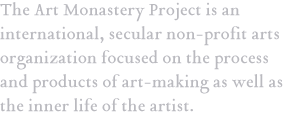Inside the Process ~ Day 79 ~ Touching Hearts

This post was composed on August 18, 2012.
How do you, as an artist, measure success?
We’ve been having this discussion around the community over the past few weeks, and it’s particularly interesting as we continue to run our show for ever-changing, wildly different Italian audiences. I think I measure success somehow by number and depth of hearts touched. Some artists say it’s enough if you get through to just one person; I really respect this sentiment, but it’s not enough for me.
Last night, I believe we really touched some people. We played to a packed house of 150 people and interacted with roughly 20-30 people after the show who truly seemed deeply moved. You have to imagine you’re seeing only a fraction; surely a handful were bored, another handful were drunk, another handful were absorbed in their own world and problems and couldn’t engage with us. But if we got half—if we touched 75 or 100 people last night, yeah, that’s enough for me. That’s enough reason to bring 10 artists to Italy for the summer, to spend 90 days of blood, sweat, tears, and lots of resources to create a show.
But it seems like one of the hardest things to measure—the depth to which people’s hearts are moved by the work you create. It’s easy to count audience attendance, to listen for applause and bravos. It’s impossible to know which feedback from audience members is characterized by genuine, spontaneous, emotional, soulful reactions and which is culturally ingrained, polite, or copied from the person next to them. And those are all fine too. I like polite audiences (we’ve struggled enough with the Italian tendency to talk right through anything going on. It seems that, even when they’re enjoying something, Italians love to comment to their neighbors about how great it is), but I love honest, open, brave audiences even more—audiences who are willing to go on the journey with you, audiences who trust you enough to take them there, audiences who will tell you how sad or happy or furious a certain part of the show made them, and why.
I was touched by hearing how the music stuck with people after the show: a young couple humming one of Charles’ songs and singing the few English words they could remember, and the wait staff singing the main musical theme of the show at the end of the night. But most notably was one woman in particular who sought me out after the show to repeat this one line back to me:
“Perché ci si dovrebbe addolorare quando il fiume della mia anima torna al mare?” Why should one cry when the river of my spirit returns to the sea?
Her name was Matilde, and she spoke to me in Italian, with tears in her eyes, trying to expound on this idea: “Yes, it’s like we all come from the same source and that we’re all part of the same flow and one day we’ll return…” She drifted off but stared at me and I was so grateful to connect to her gaze. We stood there in connected silence, in that particular space where you’re socially expected to use words, and when you both know they’re deeply insufficient.
It’s the most I could hope for: not an “ah-ha” moment—not an intellectual realization—but a genuine awakening to a spiritual truth you already knew deep inside, long ago.
What’s so touching to me about that moment is that I feel like I created this entire show—pulled all these people together, spent my entire summer and year working on this—because I had something to say. I had something to say about death or, rather, I had a series of questions to ask, ideas to discuss about death, about life, about mourning and loss that I simply couldn’t articulate in word-language. I believe we make art and choose a particular medium because it’s the only tool we have to express, to ask, to discuss really difficult and complex ideas. So I created this show because I wanted to say something—and Matilde heard it.
Connection. Communication. The sharing of ideas to create something bigger. The best-case scenario is that something from our show feeds forward into Matilde’s life, influences her mind and soul, changes the way she interacts with her children, affects her profoundly and brings her inner peace and comfort. It’s an insanely bold goal for a night of theater, and yet I can’t help but feel that we accomplished it, at least for her, on that one night under the stars deep in the Italian countryside.
How many people is enough? What do I know? Maybe touching a single heart is enough. I know that I’ll always remember the look on Matilde’s face. I know that this practice of communicating through art feels really ancient and important. We gather together—now with modern technology, on larger scales, across oceans and for months at a time—to create stories. We gather to communicate big ideas, to shout silly thoughts from rooftops, and gather below to hear them. This is what we do, as humans. And this seems worth it.
Leave a Reply
You must be logged in to post a comment.




